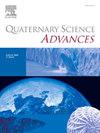滑坡易感性和安全安置区的地理空间分析:来自埃塞俄比亚南部戈法地区近期灾害的启示
IF 2.2
Q2 GEOGRAPHY, PHYSICAL
引用次数: 0
摘要
本研究利用地理信息系统(GIS)和遥感(RS)等综合地理空间分析技术,调查了埃塞俄比亚南部戈法地区滑坡的易感性,并提出了潜在的搬迁地点。将坡度、土壤类型、土地利用、降雨等因素纳入分析,确定易感区。绘制了滑坡易感性图,将该地区划分为五个易感性等级:极低、低、中、高和极高。分析表明,戈法带11.74%为极低易感性,31.33%为低易感性,30.02%为中易感性。高易感区占19.89%,高易感区占7.02%。研究结果表明,高风险地区主要位于土壤不稳定和农业活动密集的陡峭山区。相比之下,中等和低风险地区的特点是边坡更稳定,人类影响程度更低。此外,该研究还确定了滑坡风险最小的潜在搬迁地点,这些地点主要位于平坦、稳定的地形上,人类活动较少。该研究强调了将GIS和RS结合起来进行实际滑坡风险评估的重要性,并为灾害风险管理、城市规划和确定更安全的人口迁移区域提供了有价值的见解。研究结果旨在协助地方当局和规划人员作出明智的决定,以减轻滑坡灾害,促进区域可持续发展。本文章由计算机程序翻译,如有差异,请以英文原文为准。
Geospatial analysis of landslide susceptibility and safe relocation zones: Insights from recent disasters in Gofa Zone, Southern Ethiopia
This study investigates landslide susceptibility and proposes potential relocation sites in the Gofa Zone of Southern Ethiopia, utilizing combined geospatial analysis techniques such as Geographic Information Systems (GIS) and Remote Sensing (RS). Factors such as slope, soil type, land use, rainfall, etc., were integrated into the analysis to identify the susceptible zones. A landslide susceptibility map was developed, categorizing the region into five susceptibility classes: very low, low, moderate, high, and very high. The analysis revealed that 11.74% of the Gofa Zone is classified as very low susceptibility, 31.33% falls under low susceptibility, and 30.02% is categorized as moderate susceptibility. Areas of high susceptibility cover 19.89%, while very high susceptibility zones account for 7.02% of the region. The findings indicate that high-risk areas are predominantly located in steep, mountainous terrains with unstable soils and intensive agricultural activities. In contrast, moderate and low-risk regions are characterized by more stable slopes and lower levels of human impact. Additionally, the study identifies potential relocation sites with minimal landslide risk, primarily located in flatter, stable terrains with less human encroachment. This study highlights the importance of combining GIS and RS for practical landslide risk assessment and provides valuable insights for disaster risk management, urban planning, and identifying safer areas for population relocation. The results are intended to assist local authorities and planners in making informed decisions to mitigate landslide hazards and promote sustainable regional development.
求助全文
通过发布文献求助,成功后即可免费获取论文全文。
去求助
来源期刊

Quaternary Science Advances
Earth and Planetary Sciences-Earth-Surface Processes
CiteScore
4.00
自引率
13.30%
发文量
16
审稿时长
61 days
 求助内容:
求助内容: 应助结果提醒方式:
应助结果提醒方式:


